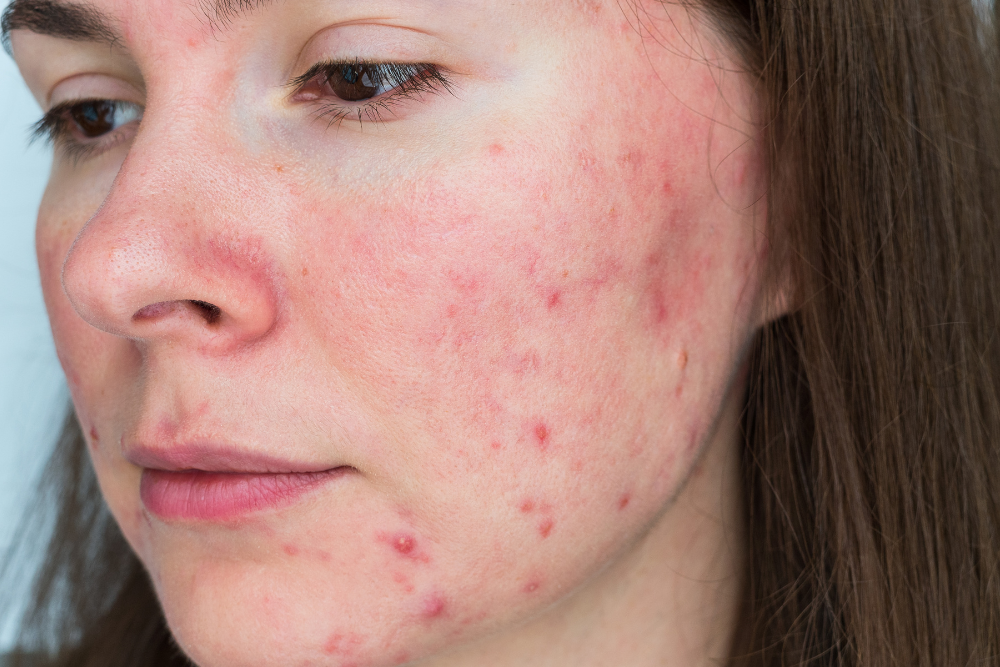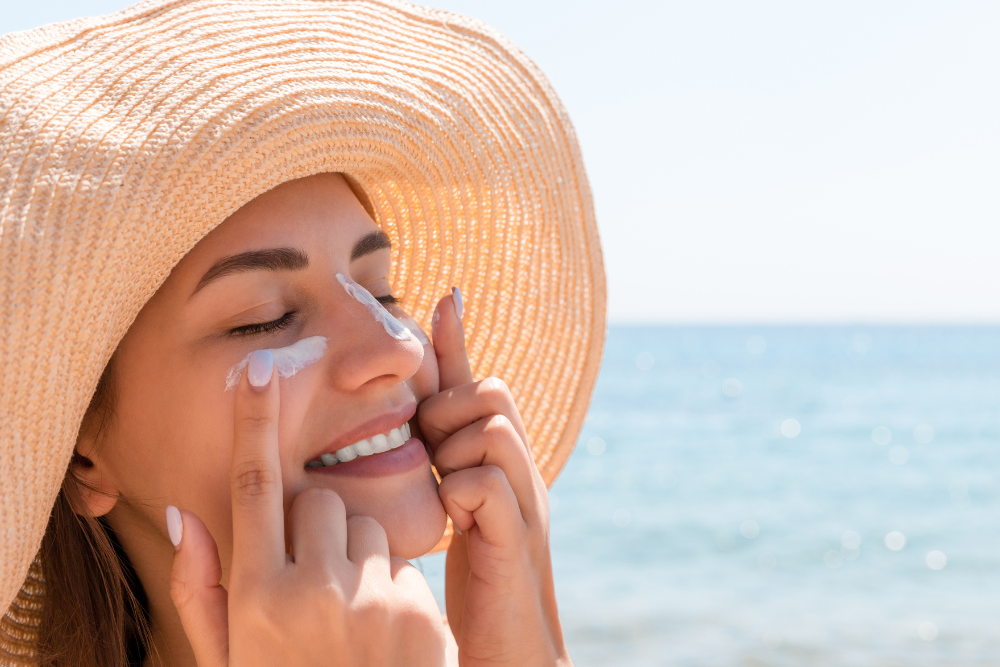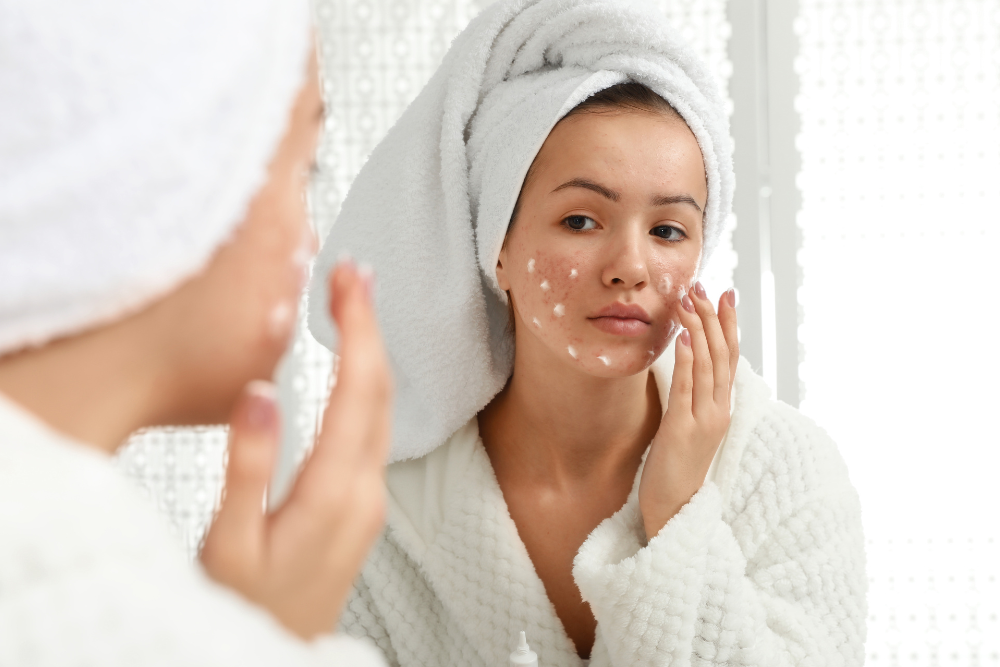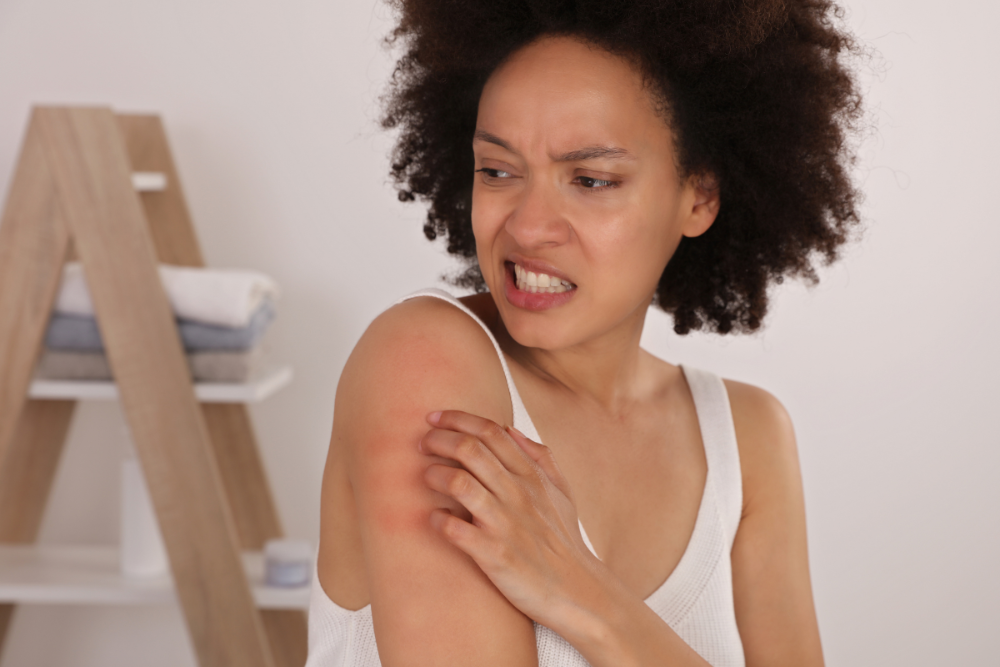Lupus rash and rosacea are both skin conditions that can cause visible redness and discomfort, but they arise from different underlying causes. Understanding the differences between these conditions is helpful towards gaining an accurate diagnosis and effective treatment. So, let’s dive into the key differences between lupus rash and rosacea, exploring their symptoms, diagnosis, treatment options, and more.
Understanding Lupus Rash
Lupus rash, also known as cutaneous lupus erythematosus (CLE), is a manifestation of systemic lupus erythematosus (SLE), a complex autoimmune disease. It mainly affects the skin and can present in different forms, including discoid lupus erythematosus (DLE) and subacute cutaneous lupus erythematosus (SCLE). Lupus symptoms can vary but often include:
Butterfly Rash (Malar Rash)
A distinctive rash across the cheeks and bridge of the nose resembling a butterfly shape.
Discoid Lesions
Circular, scaly patches that can lead to scarring and pigment changes.
Photosensitivity
Skin sensitivity to sunlight, resulting in rashes or flare-ups upon exposure.
Lupus rash is often accompanied by other systemic symptoms, such as joint pain, fatigue, and organ involvement.

Identifying Rosacea Symptoms
Rosacea is a chronic skin condition characterised by symptoms of facial redness, visible blood vessels, and sometimes, small, red, pus-filled bumps. While the exact cause of rosacea remains unknown, factors such as genetics, environmental triggers, and vascular abnormalities are believed to contribute to its development. Symptoms of rosacea may include:
Facial Redness
Persistent flushing or redness, particularly in the central face.
Visible Blood Vessels
Small, visible blood vessels (telangiectasia) on the cheeks, nose, and forehead.
Papules and Pustules
Small, red bumps or pus-filled lesions resembling acne.
In some cases, rosacea can also affect the eyes, leading to symptoms such as dryness, irritation, and swelling.

Differentiating Lupus Rash from Rosacea
While lupus rash and rosacea can both cause facial redness and skin irritation, several key differences can help distinguish between the two conditions:
Underlying Cause
Lupus rash is a manifestation of systemic lupus erythematosus, an autoimmune disease affecting multiple organs, whereas rosacea is primarily a skin disorder with no systemic involvement.
Distribution of Rash
Lupus patients develop a butterfly-shaped rash across the cheeks and nose, whereas rosacea typically involves more diffuse facial redness, often sparing the nasolabial folds.
Associated Symptoms
Lupus rash is often accompanied by systemic symptoms such as joint pain, fatigue, and organ involvement, whereas rosacea primarily affects the skin, with occasional ocular involvement (eye-related issues).
Response to Treatment
Lupus rash may require systemic treatment with medications such as corticosteroids or immunosuppressants, whereas rosacea is usually managed with topical treatments, oral antibiotics, or laser therapy.
Diagnosis and Treatment Options for Lupus Rash
A lupus diagnosis often involves a combination of clinical evaluation, laboratory tests, and skin biopsies to confirm the presence of autoimmune antibodies and assess skin involvement. Treatment options for lupus rash may include:
Topical Corticosteroids
These anti-inflammatory medications can help reduce skin inflammation and redness.
Antimalarial Drugs
Oral medications may be prescribed to suppress the immune system and manage skin symptoms.
Immunosuppressants
Certain medications may be used in severe cases to control autoimmune activity.
Regular monitoring by a healthcare provider, rheumatologist or dermatologist is essential to assess disease activity and adjust treatment as needed.Managing Rosacea: Tips and Tricks
While there is no cure for rosacea, some strategies can help manage symptoms and minimise flare-ups. Here are some tips for managing rosacea:
Identify Triggers
Keep a diary to track potential rosacea triggers such as spicy foods, alcohol, sun exposure, stress, and skincare products.
Gentle Skincare
Use mild, non-abrasive skincare products and avoid harsh exfoliants or irritating ingredients.
Sun Protection
Wear sunscreen daily and seek shade when outdoors to protect the skin from UV radiation.
Avoidance of Irritants
Steer clear of products containing alcohol, fragrance, or other potential irritants that can worsen rosacea symptoms.
Consulting a dermatologist for personalised skincare recommendations and treatment options can also be beneficial.

Prevention Measures for Lupus Rash
While there is no surefire way to prevent lupus rash, adopting certain lifestyle measures may help reduce the risk of flare-ups and minimise symptoms:
Sun Protection
Sun exposure can trigger lupus rash flare-ups, so wearing protective clothing and sunscreen is essential.
Stress Management
Stress can worsen autoimmune symptoms, so practising stress-reduction techniques such as mindfulness, yoga, or meditation may be beneficial.
Regular Monitoring
Regular follow-up appointments with a healthcare provider can help monitor the skin conditioand adjust treatment as needed.
Early detection and prompt treatment of lupus rash can help prevent complications and improve outcomes.

Rosacea vs Lupus Rash: Which is More Common?
Rosacea is more common than lupus rash, affecting an estimated 5-10% of the population worldwide. While lupus rash is less prevalent, it is a hallmark feature of systemic lupus erythematosus, a chronic autoimmune disease that predominantly affects women of childbearing age.
Both conditions can significantly impact quality of life, which is why getting a proper diagnosis and treatment is important.
Seeking Professional Help: When to Consult a Dermatologist
If you experience persistent facial redness, skin irritation, or other concerning symptoms, it’s essential to seek professional medical advice. A dermatologist can provide a comprehensive evaluation, diagnose underlying skin conditions, and recommend appropriate treatment options tailored to your needs.





